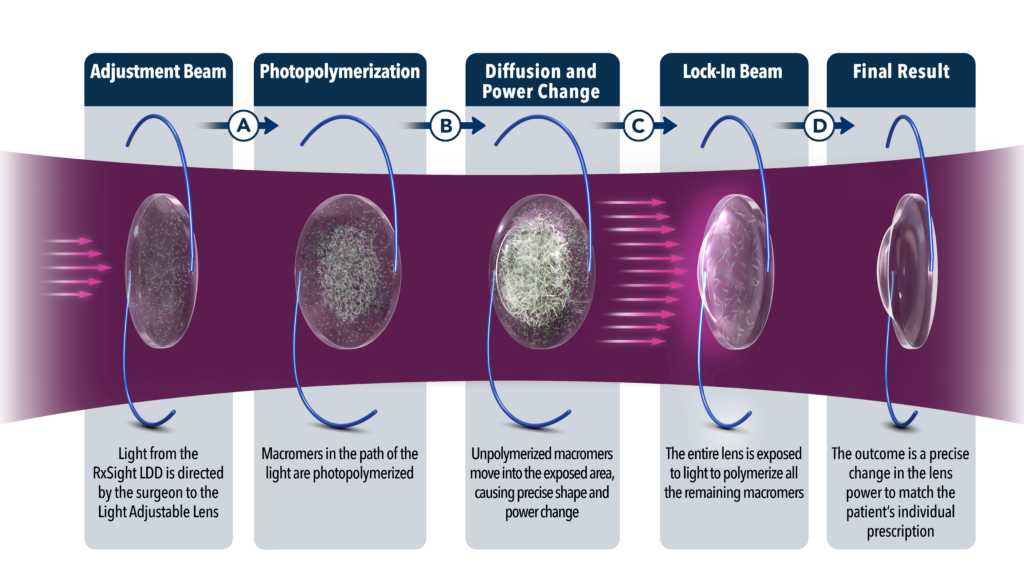
See Life Your Way with the Light Adjustable Lens (LAL) in Oviedo, FL
Imagine waking up with clear, crisp vision—tailored to your lifestyle.
Consider Light Adjustable Lens (LAL) if you want to the best possible vision after cataract surgery. The Light Adjustable Lens (LAL) may greatly reduce or eliminate the need for eyeglasses or contact lenses after cataract surgery and can help to restore your vision.
At Central Florida Ophthalmology, cataract specialist Dr. Jeffrey R. Golen offers this groundbreaking lens to help you achieve precisely customized vision—even after surgery.
What Makes the Light Adjustable Lens So Unique?
Unlike traditional lenses, the LAL allows your vision to be fine-tuned after surgery using a special light treatment. Once your eye has healed, Dr. Golen adjusts your vision in-office with UV light, allowing you to preview and personalize your results.

Up to three painless light treatments help you reach your ideal vision goals—whether that’s crisp distance vision, sharp reading ability, or a balance of both. Once you’re happy with your results, we “lock in” your prescription with a final treatment.

What to Expect: Simple Surgery, Smart Vision
Cataract surgery with the LAL is quick and comfortable, usually lasting 10–15 minutes. Dr. Golen will replace your clouded natural lens with the LAL through a tiny incision.
The real magic begins afterward: your vision continues to improve and adapt with your feedback.
Wearing Special Glasses
After surgery, you’ll wear UV-blocking glasses to protect your lenses until all light treatments are complete. These stylish glasses prevent unintentional UV exposure and ensure your lenses stay in perfect condition until your final adjustment is locked in.
Most patients wear the glasses for 3–6 weeks, and many say it’s a small price for the clarity and control they gain.
Is the LAL Right for You?
You may be a great candidate if:
Dry eye? Not to worry. Dr. Golen can help treat that beforehand to prepare your eyes for success.
Why Patients Love the LAL Experience with Dr. Golen
Take Control of Your Vision Today
Ready to explore a clearer, more personalized way to see the world? Call Dr. Jeffrey Golen’s office in Oviedo or book a consultation online to learn if the Light Adjustable Lens is right for you.
